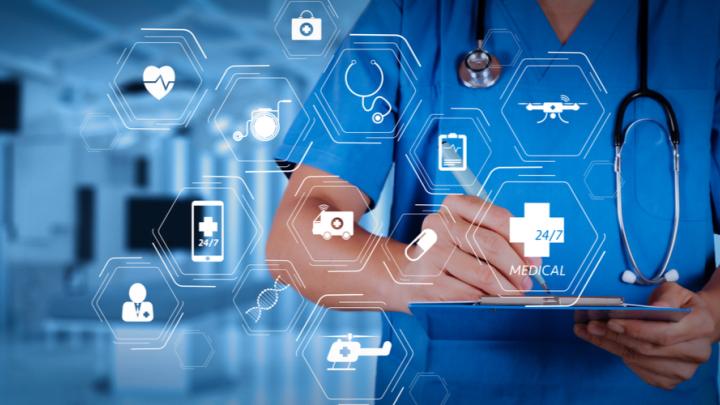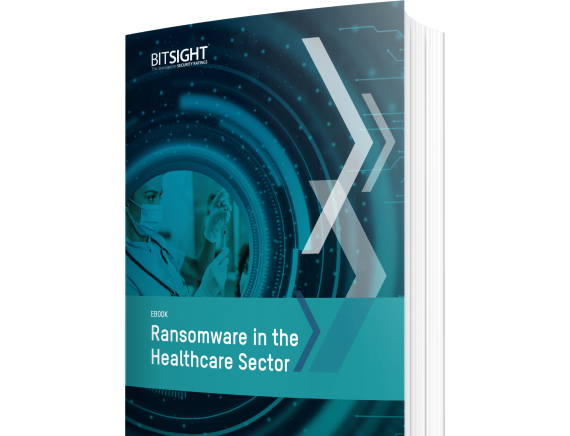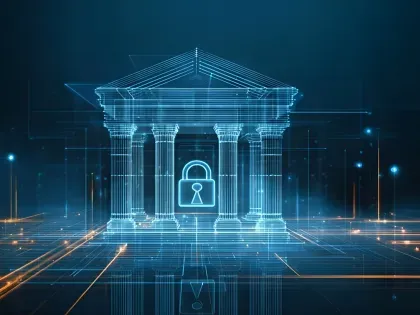Download the “Ransomware in the Healthcare Sector” eBook to see how the ransomware trend is specifically impacting healthcare organizations, and learn how your organization can implement the right technology to combat the unique risks.
How Universal Health Services Could Have Avoided A Ransomware Attack

Over the weekend of September 26th, major healthcare provider Universal Health Services experienced a ransomware attack resulting in widespread computer systems failures. Without access to their digital databases, doctors and nurses were forced to resort to pen and paper notes, postpone medical treatment, and work through gaps in medical history for patients needing care; all during an already high-pressure time for health care workers fighting the global COVID-19 pandemic.
The U.S. based organization runs over 400 hospitals and medical practices nationwide, and a week after the attack were still in the process of slowly bringing their digital services back online. The systems were said to have suffered a ransomware attack, where malicious actors spread dangerous software across computer networks, hijacking files and network data and demanding payment in exchange for release.
Since 2009, there have been over 3,000 healthcare data breaches in the US medical industry, and the threats have only continued to intensify since the COVID-19 pandemic began, putting extreme pressure on the healthcare system globally. There have been no reported injuries as a result of Universal Health Services' data breach, but alarmingly just last year a patient in a German hospital died when a hacker infiltrated their systems and forced the medical staff to move her to a different medical facility.
Malicious activity to cybersecurity systems can lead to an array of life-altering outcomes, and when the victim is an organization within the medical industry it can lead to physical harm of innocent patients. Protecting your digital ecosystem is a must in today’s world of increasingly sophisticated hacking attempts. We’ve outlined three ways below to help protect your organization from cyber threats.
Set Up A Cyber Alert System
Hackers are able to gain access to more of your sensitive data the more time they have to roam inside your internal systems. Some organizations that experience data breaches never completely know the depth of the damage to their systems and are subject to dealing with bad actors continuously revealing data they obtained.
When companies enable their security teams to detect weak points in their system, they can act to pinpoint and eliminate the opportunity for malicious actors before serious damage occurs. Bitsight’s security ratings platform includes an alert system to immediately make cybersecurity teams aware of bad actors targeting their network. Continuous monitoring also directs teams exactly towards the vulnerable spots in their network instead of forcing teams to search for the compromised systems themselves.
Alert systems allow organizations to take back control of their data from malicious actors, enabling security teams to save time and money spent dealing with the long-lasting effects of compromised data.

Don’t Ignore System Updates
Do you snooze notifications on your devices alerting you to software updates? While you might be delaying updates to UI or slight bug fixes, you are also delaying the most recent updates to security protection for your device. This can cause programs to glitch, but also provides an opportunity for malicious software to make camp in your network.
Now imagine the same delay of updates on a larger, company-wide scale. If your employees aren’t required to update their work devices, or your cloud provider is delayed in updating their programs with the latest system updates, you could be subject to malicious activity just due to an inefficient update process.
The same concern goes for your third-party pool. It is important to include mandatory system updates in your vendor contracts to ensure you aren’t at risk from an outdated system within a third-party.
Monitor Your Entire Pool of Vendors Consistently
Most organizations today do not function successfully without utilizing outside vendors. As your vendor pool expands, your systems are also susceptible to any malicious activity that occurs throughout your third-party platforms.
To best protect your systems against an attack through a third-party, we recommend implementing a continuous monitoring strategy with your vendors. Set a standard risk threshold you’re willing to accept across your vendor pool so that you will be notified if a vendor drops below the accepted security rating. Instead of only thinking about your vendor cybersecurity vulnerabilities when conducting a scheduled audit, continuously monitoring allows security managers to avoid surprises and manage risk more efficiently.
Bitsight for Third-Party Risk Management provides users with a continuous monitoring option to have a constant view into the risk inherited from their vendors. Continuous monitoring allows organizations to respond quickly when malicious activity occurs to avoid lengthy recovery processes like Universal Health Services is now experiencing.
Don’t Wait To Start Managing Cyber Risk
Given the increasing number of large-scale malware attacks, companies can no longer afford to put cybersecurity on the back burner. You don’t have to wait for malicious activity to occur before you take action to protect your company’s databases. Implementing security ratings to monitor your internal and third-party systems allows for proactive security management and more efficient response.
To learn more about how your organization can prevent cybersecurity threats to your network, download our eBook.


